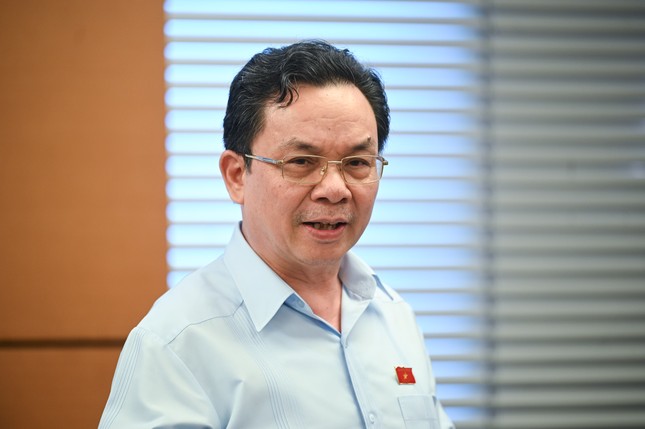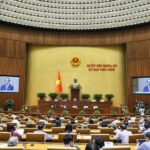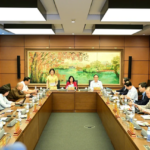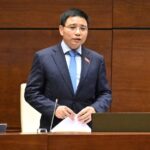Are there localization commitments?
A proposal for VinSpeed, a private company, to invest in the construction of the high-speed North-South railway has sparked great interest from the public and experts.
Speaking to the press at the National Assembly, Mr. Hoang Van Cuong, National Assembly deputy for Hanoi and former vice-principal of the National Economics University, expressed his support for this initiative. He also emphasized the core requirements for allowing private enterprises to undertake this important national infrastructure project.
However, as this is a key project and the “backbone” infrastructure of the nation, even if private investors provide the capital, they must still adhere to state requirements and regulations. “These crucial national projects, regardless of their form, are all based on the principle of state management,” said the Hanoi delegate.
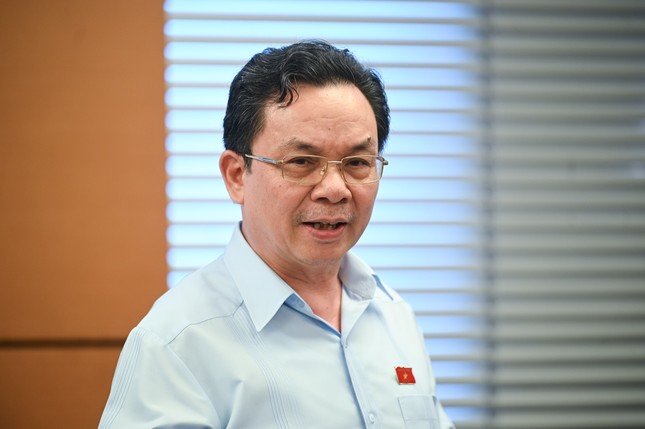
National Assembly Deputy Hoang Van Cuong. Photo: QH
According to Mr. Hoang Van Cuong, the most important issue is to ensure that the domestic investor actually manufactures in the country. Importing foreign products and components for mere assembly or processing will not achieve the desired objective, he noted.
Regarding the deployment of the North-South high-speed railway, at a working session on May 20, Prime Minister Pham Minh Chinh instructed the Ministry of Construction, the Ministry of Finance, the State Bank, and relevant agencies to study VinSpeed’s proposals and report to the competent authorities.
“We need to consider whether the investor commits to localization, and whether they will partner with other domestic businesses and investors to produce components, accessories, and equipment based on foreign technology,” said the deputy, emphasizing that this is the most important criterion when deciding whether to accept the proposal.
Another important issue that has attracted attention is VinSpeed’s proposal to borrow 80% of the capital from the state at a zero-interest rate for 35 years to implement the project. Is this feasible?
Delegate Hoang Van Cuong analyzed that, typically, investing in transport infrastructure, including railways, has a very slow initial capital recovery. The main recovery comes from the spillover effects, creating development and bringing benefits to society. Direct revenue from the project itself is almost impossible.
“When private investors are willing to invest, we must also consider their plans to ensure that the state has policies to create resources for them,” said Mr. Cuong.
Controlling Capital Flows
In the case where the investor wishes for a non-ordered approach and the state provides an interest-free loan, Mr. Hoang Van Cuong considers this “a good option.” According to him, this money is not given away without recovery, but the recovery period for infrastructure projects is always very long, and the profit is meager.
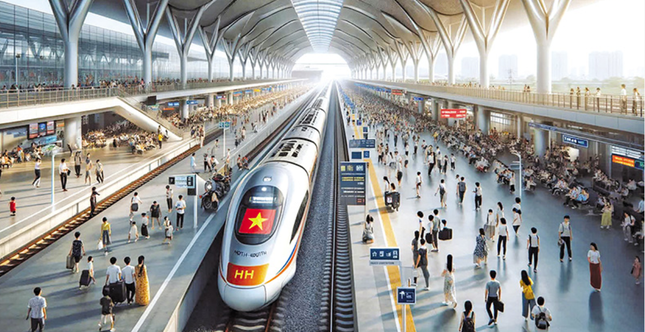
North-South high-speed rail perspective.
At the same time, he also noted that in public investment, when money is spent, it is necessary to control whether it goes into the right project. Lending to private investors also requires monitoring to ensure that the capital flow goes into the desired projects. It shouldn’t be given and then used for other purposes.
In the case of public investment, every expense must be controlled and monitored, adhering to supervision, bidding, and setting cost standards for every purchase of materials and raw materials.
“With private investors, they manage and decide on these matters themselves. The state only manages the overall process to ensure that the product or project meets the set requirements, standards, and regulations,” said Mr. Hoang Van Cuong.
The Hanoi delegate added that private investors who wish to borrow capital with a smaller amount are temporarily exempting the state from having to invest directly. Instead, the state lends to the enterprise, which will later repay the loan. Financially speaking, this option is more efficient for the budget and does not cause losses.
“This is the state’s support to help private enterprises do what the state should have done. The state was supposed to invest, but now a private enterprise is willing to take on this responsibility, which is worth encouraging,” concluded the Hanoi delegate.
Free Tuition for All Public School Students Nationwide, With Subsidies for Private School Students.
“Supporting students in both private and public educational institutions showcases the superiority of our system. It ensures a unified approach to policy implementation and fairness in access to education. This approach encourages the development of non-public education and enhances societal participation in education.”
The Economic and Social Development and Budgetary Affairs: A Parliamentary Discussion
“On May 23rd, alongside reviewing and providing feedback on legal projects, the National Assembly will hold intra-party discussions regarding the implementation of the socio-economic development plan and the state budget for the first few months of 2025.”
“Unraveling the Knot: Minister of Finance Admits State’s Fault in Troubled BOT Projects”
Let me know if you would like me to continue crafting captivating content or headlines for you!
“Finance Minister Nguyen Van Thang asserted that the challenges faced by certain BOT projects are not the fault of investors but rather due to state policies. He emphasized the need to address these policy-related issues to find a resolution for the affected projects.”

